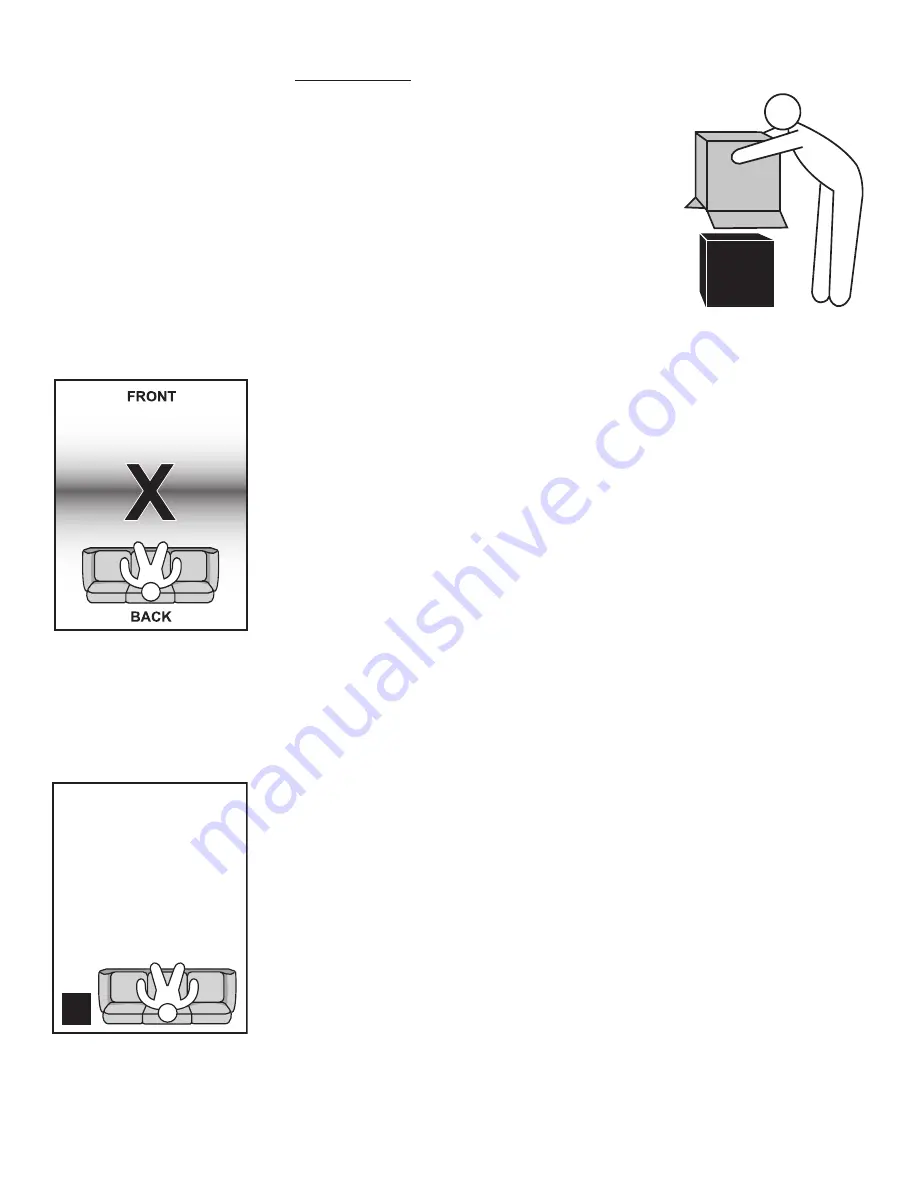
Set-Up
Avoid placing the subwoofer
halfway between the front
and back walls. Avoid sitting
there as well.
Corner and nearfield
placement usually sound best.
3
Step 1: Unpacking
Unpack the subwoofer on a soft surface to avoid unwanted scuffing or scratching. Use two people to
unpack. Find the top of the outer box and open it. Holding the flaps open, roll the outer box over until
it is upside-down. Lift the outer box off, and open the inner box. Remove the accessory kit and top
foam pieces, and open the protective bag. Install the rubber feet from the accessory kit, and position
the subwoofer on its feet, making sure not to drag the subwoofer while moving it into position. Then
remove the protective bag from the subwoofer.
Stop for a moment to inspect the subwoofer for any damage that may have occurred during shipping.
If there is damage to the subwoofer underneath, or if there are missing items, notify HSU Research
within one business day. We will help you find a solution.
Step 2: Placement
Placement is extremely important because it dramatically affects the bass quality. An optimally placed
subwoofer is much more powerful and nice sounding than a poorly placed one. There are many myths
about subwoofer placement. For example, there is no need to center a subwoofer between the left and
right front speakers. Good subwoofers radiate bass in all directions and cannot be located in the room
by sound alone.
Important guidelines
• Always maintain at least 3 inches of clearance between the driver and ports on the front of the
subwoofer and nearby surfaces.
• Your subwoofer does not have magnetic shielding. Keep the subwoofer at least 5 feet away from
CRT type monitors. LCD, Plasma, and DLP TV’s are not affected, and the subwoofer can be placed
next to these items with no magnetic interference. Keep the subwoofer at least 4 feet away from
computer hard drives in order to prevent the hard drives from being erased.
Rules of thumb for placement
• Avoid the center of the room:
In general, avoid placing the subwoofer half way between the front
and back walls. This is where you get a strong null from your room’s standing waves. You should
also avoid sitting in that area. No matter how powerful the subwoofer is, there will not be much
bass around the center of the room.
• Use corner placement:
Subwoofers usually sound best tucked in a corner. A good corner is far from
wall divisions and has at least 6 feet of wall to either side. If you have more than one good corner, use
the one farthest away from large room openings or the one closest to the listener. Keep the subwoofer
within 1 foot of the wall.
•
Use nearfield placement:
A good subwoofer usually sounds best close to the listening position. As an
added bonus, the subwoofer’s volume level will be lower so neighbors are less disturbed. We strongly
recommend this method if your couch is up against the back wall and your room is over 18 feet deep.
•
Use “subwoofer crawling”:
This excellent technique is not as hard as it sounds. The room’s
acoustical reflections are used to your advantage. Place the subwoofer in the listening position, in
a seat, towards ear level. Connect the subwoofer to the system and play some music with steady and
constant bass. Walk around the room, listening for the nicest and most even bass. When the bass
sounds good, crouch down and listen where the subwoofer would normally be. You may use a SPL
meter to measure the evenness of the bass. Mark the best sounding place. The subwoofer should
be placed there.
• If you are using two subwoofers, place them side-by-side to maximize headroom, or separate them
to potentially smooth out in-room response.
• If you are not able to place the subwoofer in an ideal location, the subwoofer should be placed
within a foot of a wall for better bass.
• You may place a subwoofer inside a cavity in your entertainment center if one inch of space is
maintained around the back, top, and sides of the subwoofer. You may need to secure items in the
cabinet so they don’t vibrate.






























